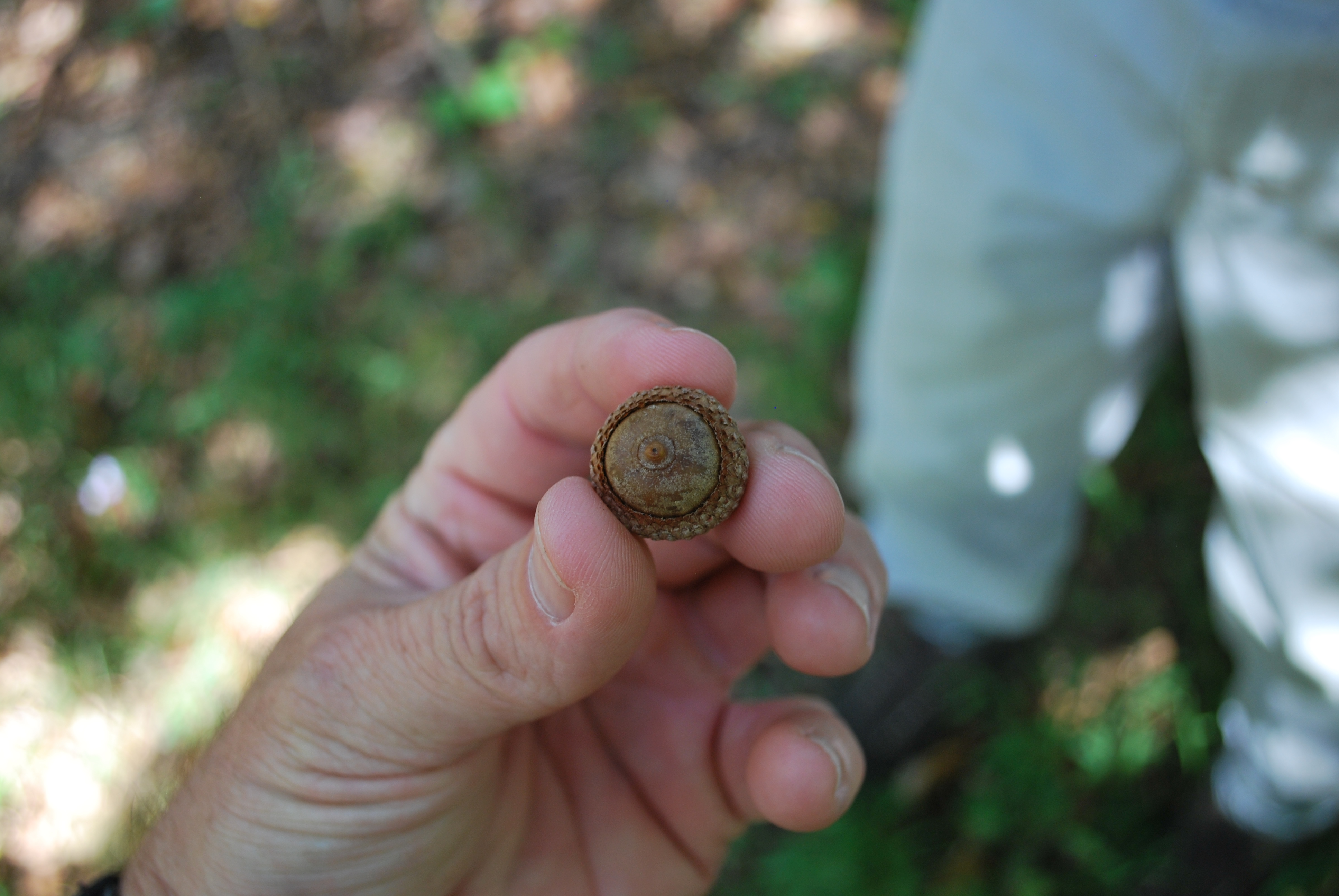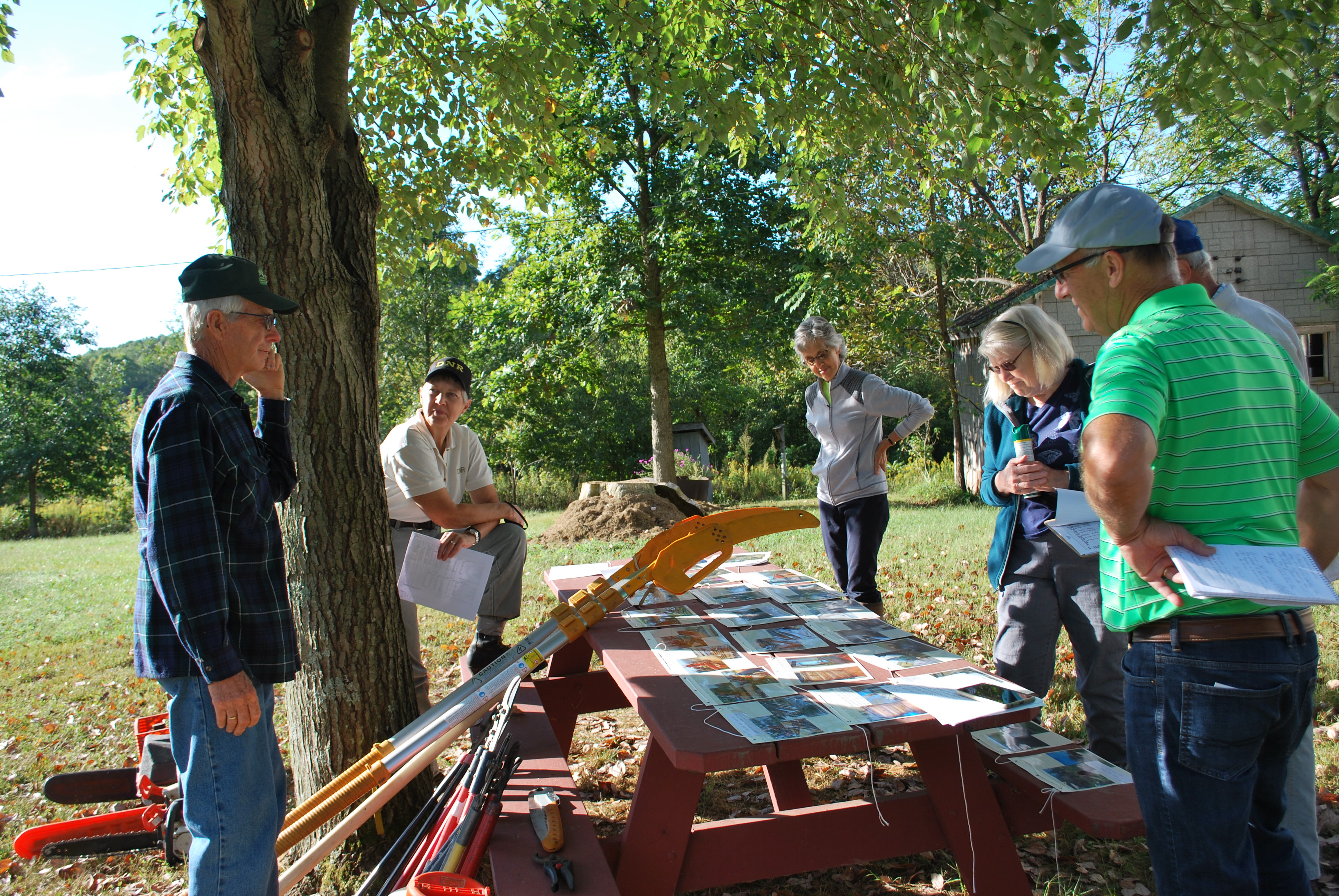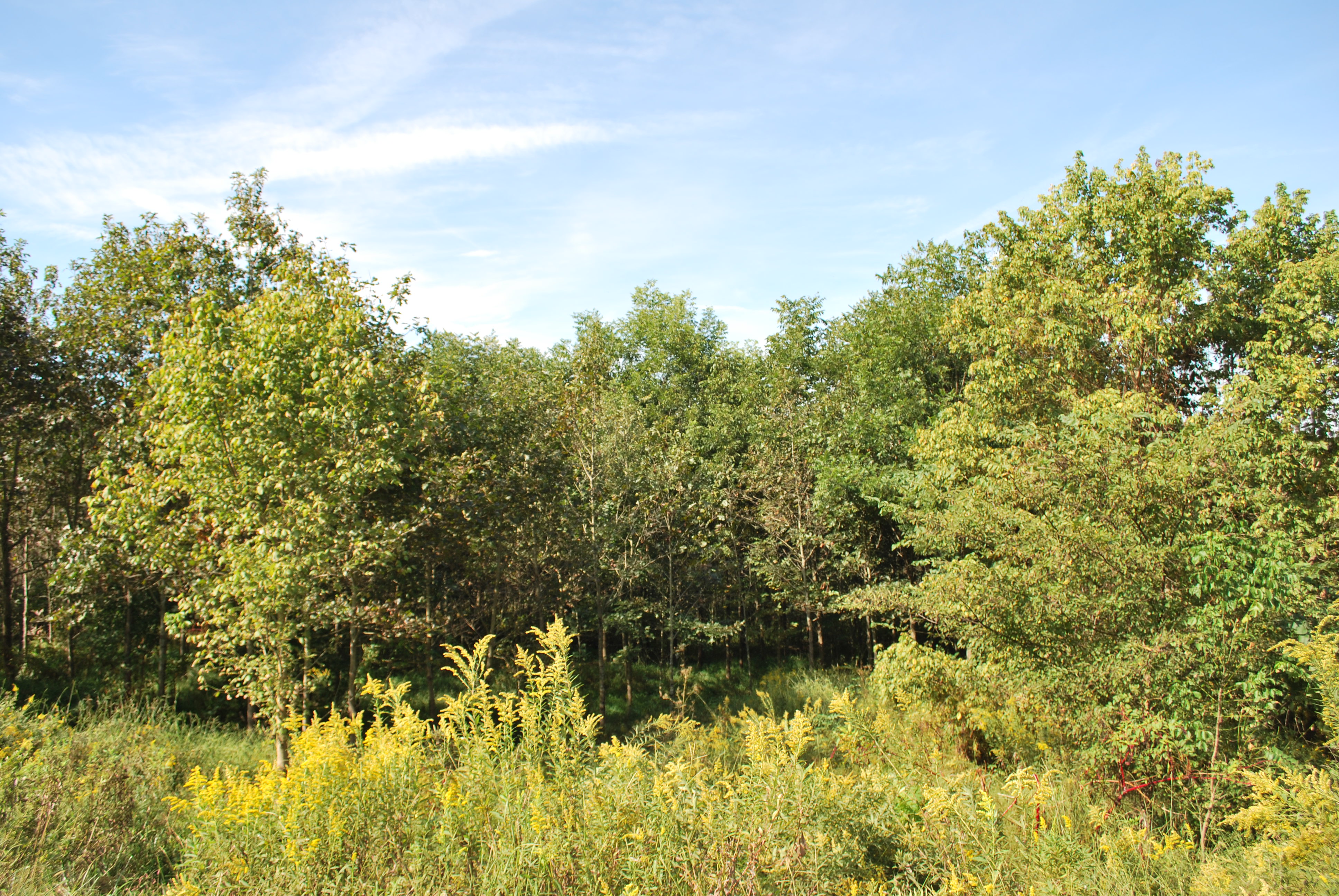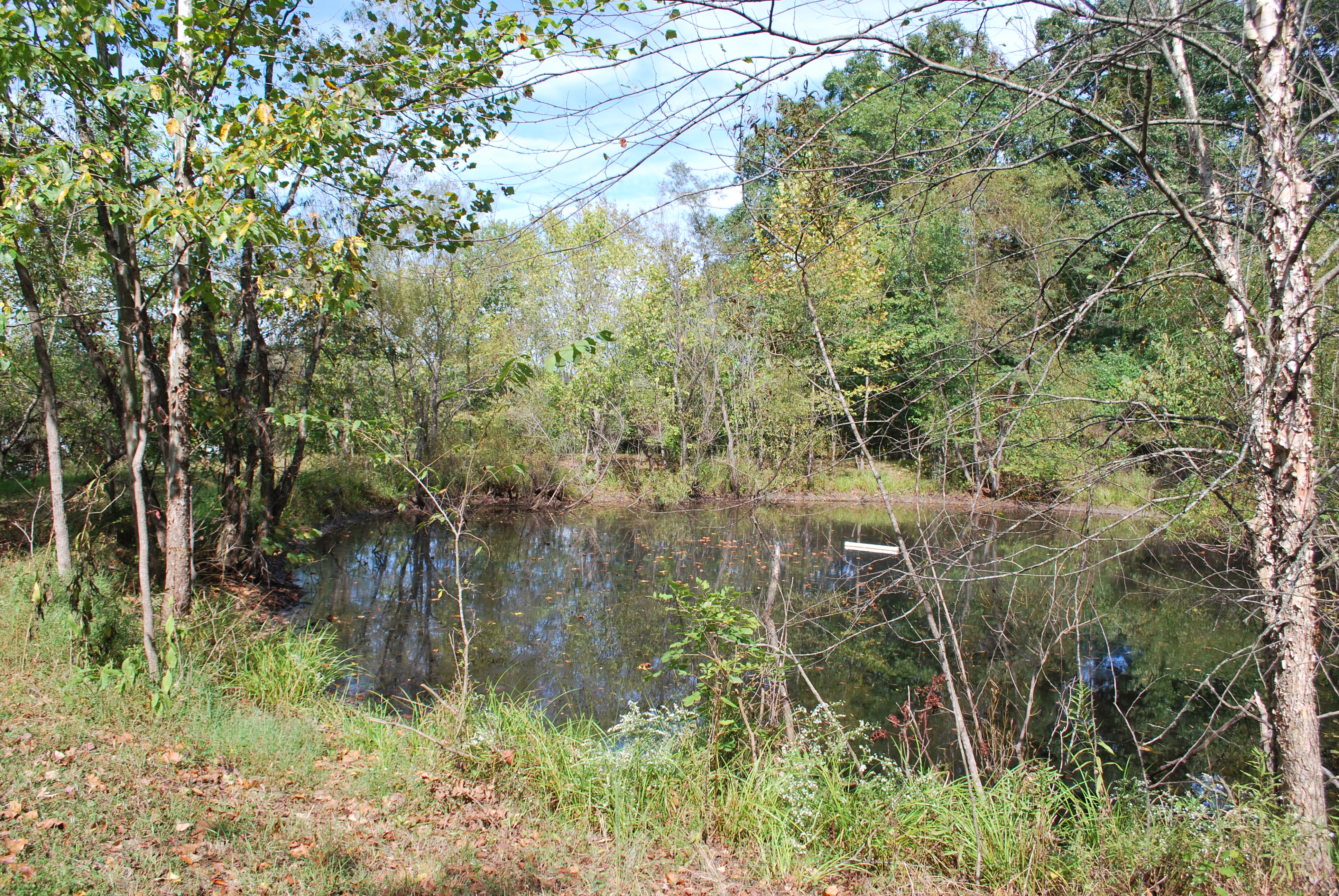Creating A Woodland Legacy: Dave and Carol Niehaus
For Dave and Carol Niehaus of Newburgh, Indiana, trees are a part of their heritage. The forest provides recreation, brings family together and drives their stewardship of the land.
The Niehauses’ tree farm encompasses 182 acres in Perry and Dubois counties in southern Indiana. The land has been in their family since Dave Niehaus’s grandparents bought it soon after they married in 1909. Back then, only 100 or so acres of the property were forest; the remaining 80 acres comprised open land.
Niehaus’ grandparents built a house on the farm in 1918. In 1931, his grandfather died in a horse accident, leaving his grandmother to raise their nine children. Dave’s father, the oldest, was 19 at the time.
 The children grew up and moved on, but Niehaus’s grandmother would continue living there for the remainder of her life. Young Dave grew up in Saint Meinrad, about six miles away. “I spent a lot of time up there, in the forest,” he says. “The fields then were in the Soil Bank program (now the Conservation Reserve Program) because about 40 acres of the open ground was in the flood plain, so they were used to losing their crops, and losing their soil down in the bottoms. In the CRP ground, once a year you’d have to mow all of that down. Dad had a little 8N Ford tractor with a side mower on there, and I mowed all that down and just spent time with Grandma up there.”
The children grew up and moved on, but Niehaus’s grandmother would continue living there for the remainder of her life. Young Dave grew up in Saint Meinrad, about six miles away. “I spent a lot of time up there, in the forest,” he says. “The fields then were in the Soil Bank program (now the Conservation Reserve Program) because about 40 acres of the open ground was in the flood plain, so they were used to losing their crops, and losing their soil down in the bottoms. In the CRP ground, once a year you’d have to mow all of that down. Dad had a little 8N Ford tractor with a side mower on there, and I mowed all that down and just spent time with Grandma up there.”
Niehaus’ older brother bought the property in 1969. When he decided to sell, Dave stepped up to purchase it in 2005. “It’s our roots,” he explains. “I didn’t want it divided up.”
Ten years earlier, he’d asked his brother for some land so he could try his hand at planting trees. Niehaus was an Army veteran and a carpenter; he didn’t know much about forestry, but he wanted to learn. He started in 1995 on a four-acre horse pasture with 16 5-gallon buckets of acorns he’d raked up in a city park. He rigged up a PVC pipe that dug a trench in the subsoil as he dropped the acorns through a funnel into the pipe, planting them in rows across the field.
 The following spring, not a single white oak came up. “My brother just laughed and said, ‘You got a lot of fat mice running around up there,” Niehaus recalls.
The following spring, not a single white oak came up. “My brother just laughed and said, ‘You got a lot of fat mice running around up there,” Niehaus recalls.
The following fall, he enlisted the help of Dr. Jim Wichman with the Indiana Department of Natural Resources, Division of Forestry Nursery Section. Niehaus started one bucket of acorns in his garden, where he could better protect them from predators and mold. He experimented with coverage, noting that germination under peat moss far exceeded that of pine needles and dirt. He then hand-transplanted the seedlings to rows on the open land — a second, and more successful, try at growing a forest.
Over the next three years, Niehaus cultivated enough seedlings to hand plant the four acres. He expanded his sights.
One year he got 500 seedlings from the state nursery and in the course of planting them, credits his then 10-year-old daughter with an important lesson. “She said, ‘Dad, this is going to look funny when this grows up… When you go into a forest, the trees are spaced here and there. And these are all going to be in a row.’ And I said, ‘Andrea, you just got the vision.’ So that’s what it is now.”
After he bought the property in 2005, Niehaus signed on for a class at the Southern Indiana Purdue Agricultural Center in nearby Dubois, Indiana, Forest Management for the Private Woodland Owner. Extension Forester Ron Rathfon led the eight-week course.
 “I wanted to know a little more about forestry,” Niehaus says. “I wanted to be a good steward of the property.”
“I wanted to know a little more about forestry,” Niehaus says. “I wanted to be a good steward of the property.”
Rathfon has been helping residents manage their woodlands for 30 years, along with the Purdue Forestry and Natural Resources Extension team and public and private resource professionals who offer classroom and field instruction. “Ron makes the class interesting, and he makes it fun,” Niehaus says.
His main takeaways from the course were in tree identification and forest biology. “If you want to manage your forest to get it to grow back to be oak trees, you have to be able to recognize the different species of trees at different ages,” Niehaus says.
Early on, Rathfon brought in a district forester to talk to the class about tree identification. “I always thought you had to recognize them from their leaves and their bark,” Niehaus says. “And he said, ‘No, you recognize them from the seed, the flowers, the different branching, the buds. If you want to work in your forest in the wintertime, you have to be able to recognize which trees you’re getting rid of when they don’t have leaves.’ That’s been really helpful to recognize what we have, and what we don’t have, in certain areas.”
With the help of tree planters, Niehaus added 11,000 trees in 2006 and 22,000 in 2007. Over the next three years, family members hand-planted between 3,000 and 4,000 more to fill in the pastureland. The property now has 100 acres of forest and 70 acres of plantation.
The class was so packed with information, Niehaus took it twice more: in 2009, with his son-in-law; and again in 2015 with Carol, their daughter and three grandchildren. “The forestry class really opened up our eyes,” he says. “The more we learn, the more we realize how much we don’t know.” He also has attended 15 or so forestry field days since taking ownership of the farm.
“We’ve had to do a lot of work — a lot more than I thought we would — on invasive plants,” Niehaus says. “The multiflora rose and the honeysuckle, it’s just a constant battle with them, and that forest management class has really helped us as to when to spray and what to use.”
“The Niehaus family is passionate about the land, the forest, the wildlife,” says Rathfon. “Their excellent stewardship of the forest will extend beyond their lives as they make forestry fun and enjoyable for their children and grandchildren while also teaching valuable life lessons about hard work, patience, and investment in the future health of the forest and the land.”
Niehaus and his family do most of the woodland fieldwork themselves. Three years ago marked his first try at controlled burning. In four burns over a week, he cleaned out seven acres where he hopes acorns that drop next fall can take root. Time will tell, he says: “I’m an experimental person, just trying to do what the Forest Service tells us.”

The David and Carol Niehaus Family were named state winners of the Charles Deam Forest Stewardship Award at the November 2019 annual woodland owners conference. The award was meaningful to the Niehauses because it reflected Dave’s desire to improve the land for the next generation. He ponders that as he prunes trees, sprays for invasive plants or marks old fence lines: “Each time I’m going to do something to make it a little better.”
The couple has five sons and five daughters. Their 34 grandchildren “love to go to that farm,” Niehaus says. “We have work days up there where they help clean the trails and make firewood.” The firewood, he notes, is for timber stand improvement and is used for family campfires. “It’s a win-win situation.”
In addition to the original house — “it’s a good cabin, is what it is,” Niehaus says — the property also has an old barn distinctive for its wooden peg construction and a second barn added in 1979. A 2014 family reunion of Dave’s side of the family drew 116 to the property.
Not all of the Niehaus children are equally interested in tree farming, but Dave and Carol are optimistic that some may carry on their work.
“The grandkids love taking the gators up there and driving the trails,” Niehaus says. He recalls two grandsons from different families dragging an old canoe from the barn. Both boys and Niehaus had cell phones with them. Good thing, too — the boys were a mile down Hurricane Creek before he caught up with them.

The Niehauses have used the property for family camping and an annual squirrel-hunting party, where cousins gathered for hunting and storytelling. But mostly, it’s their “getaway place,” Carol says, a source of healthy physical activity and a respite from day-to-day stress.
“Dave would say, ‘I’m going to sneak off to the tree farm,’” Carol says. “And that was aggravating to me, because I’m thinking, oh, that’s all he wants to do. But he would say, ‘When I go up there, there ain’t one of those trees that ever talked back to me.’
And together, they appreciate the cry of a whippoorwill or the drumming of a pileated woodpecker. “Just the privilege of being outdoors and in nature,” Carol says. “Besides the peace and the tranquility, it’s just so beautiful. It’s like we have our own state park.”
“Our own nature show,” Dave adds.
“It’s such an adventure!” she says. “The simplest things of life can bring so much joy to one’s heart.”
For those who would like to get a taste of the Forest Management for Woodland Owners course, join us at the Forestry Field Day from 9 a.m. to noon, March 25th at Martell Forest. Purdue Extension’s Lenny Farlee will cover tree ID basics, forest biology, and some forest management practices demonstrated at Martell Forest. No fee or prior registration is required. This program will take place outside in woodland areas rain or shine. Contact Farlee with any questions at lfarlee@purdue.edu.
Martell Forest is located at 1007 N 725 W, West Lafayette, IN 47906.
